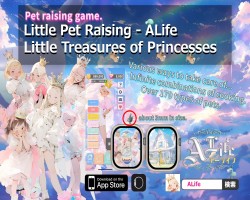EL Seed's Calligraffiti and Arabic Calligraphy
Delve into the world of eL Seed calligraphy, blending graffiti with Arabic calligraphy in Arabic, showcasing cultural narratives and artistic innovation.

The art of Arabic calligraphy in Arabic script has long been revered for its elegance and spiritual significance. In contemporary times, artists like eL Seed have reimagined this traditional form, merging it with modern street art to create a unique style known as calligraffiti. This article explores the evolution of eL Seed calligraphy and its impact on the perception of Arabic script in the modern art world.
The Essence of Arabic Calligraphy
Arabic calligraphy in Arabic script, or "الخط العربي," is more than just beautiful handwriting; it's a profound expression of cultural identity and religious devotion. Originating in the early Islamic period, this art form has evolved through various styles, including Kufic, Naskh, Thuluth, and Diwani, each with its distinct characteristics and historical contexts.
The Emergence of Calligraffiti
Calligraffiti is a contemporary art movement that fuses traditional calligraphy with graffiti. This style maintains the aesthetic principles of classical scripts while introducing the dynamism and rebellious spirit of street art. Artists like eL Seed have been at the forefront of this movement, using it as a medium to bridge cultural divides and address social issues.
eL Seed: A Pioneer of Calligraffiti
Born in Paris to Tunisian parents, eL Seed developed a deep connection to his Arab heritage through the exploration of Arabic script. His works are characterized by intricate designs that often carry messages of peace, unity, and cultural reflection. Notable projects include the "Perception" mural in Cairo, which spans over 50 buildings and is only fully visible from a specific vantage point, symbolizing the importance of perspective in understanding communities.
The Artistic Philosophy of eL Seed
eL Seed calligraphy is not just about aesthetic appeal; it's a form of storytelling. By incorporating quotes from poets, philosophers, and historical figures, his art invites viewers to engage with the underlying messages. His approach emphasizes the universality of human experiences, using the beauty of Arabic calligraphy in Arabic script to foster dialogue and understanding.
Impact on Contemporary Art
The integration of eL Seed calligraphy into public spaces has challenged traditional notions of art accessibility. By bringing Arabic calligraphy in Arabic script to urban landscapes, he has democratized the art form, making it a part of everyday life and encouraging public interaction with cultural heritage.
FAQs
Q: What is the significance of eL Seed's work?
A: eL Seed calligraphy bridges traditional Arabic calligraphy with modern street art, promoting cultural dialogue and social awareness.
Q: How does calligraffiti differ from traditional calligraphy?
A: Calligraffiti combines the structured beauty of classical scripts with the expressive freedom of graffiti, creating a contemporary art form that resonates with diverse audiences.
Q: Can anyone learn calligraffiti?
A: Yes, with dedication and practice, individuals can learn the techniques of calligraffiti, often starting with a foundation in traditional Arabic calligraphy in Arabic script.
Q: Where can I view eL Seed's artworks?
A: eL Seed's murals are displayed in various cities worldwide, including Cairo, Paris, and Dubai. His official website and social media platforms also showcase his projects.
Conclusion
The fusion of eL Seed calligraphy and Arabic calligraphy in Arabic script exemplifies the dynamic nature of cultural expression. By honoring tradition while embracing innovation, artists like eL Seed continue to redefine the boundaries of art, making it a powerful tool for connection and transformation.
What's Your Reaction?

















.jpg)
.jpg)


